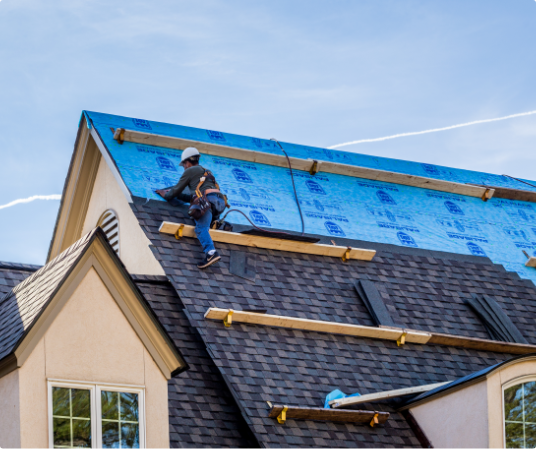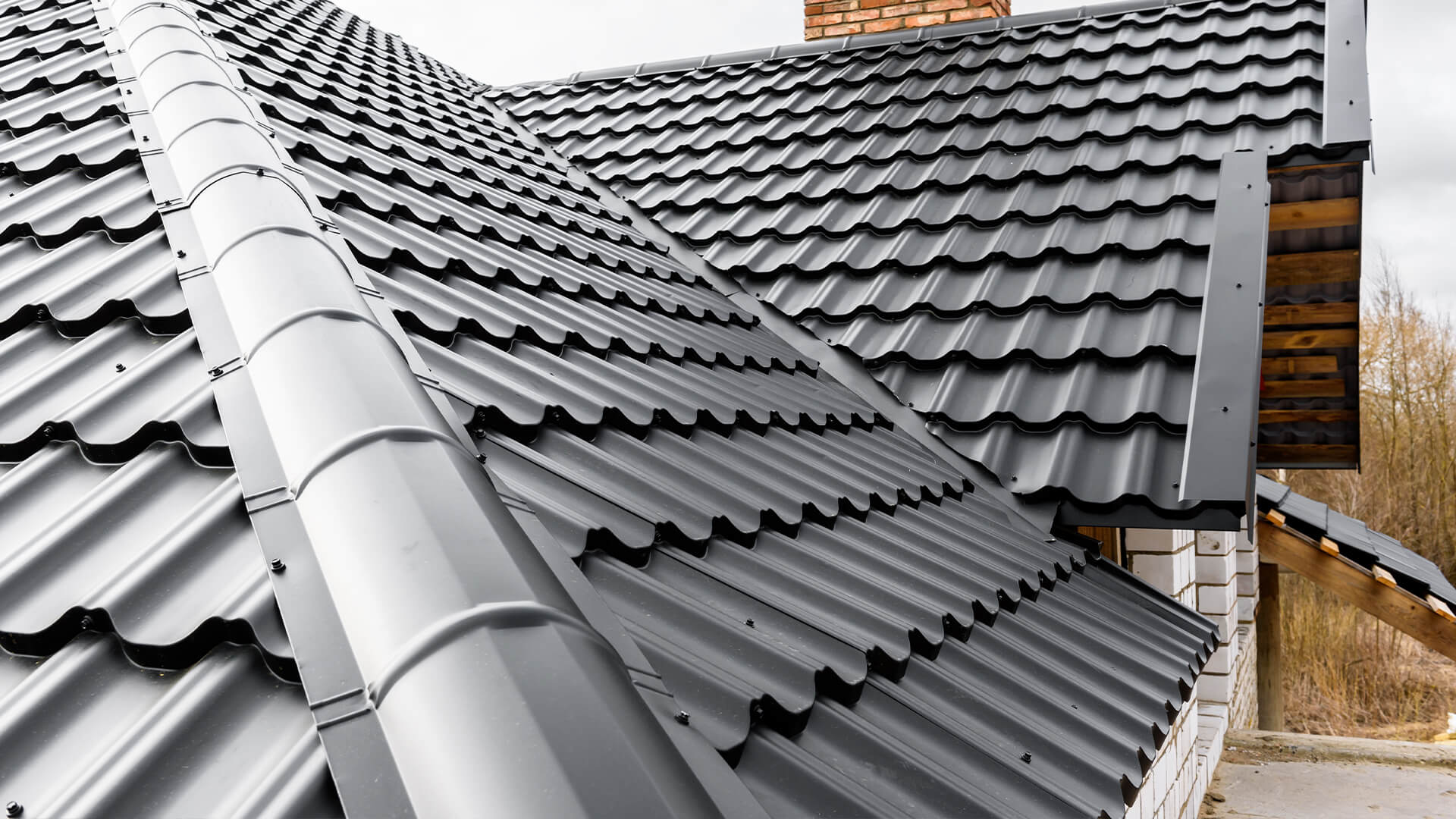Important Inquiries to Ask Gainesville Roofing Companies Prior To Hiring
Important Inquiries to Ask Gainesville Roofing Companies Prior To Hiring
Blog Article
Ideal Practices for Ensuring Correct Roof Covering Ventilation
A well balanced consumption and exhaust air vent proportion, generally 1:300, plays an essential function, with consumption vents ideally positioned at the lower side of the roof covering for cool air access and exhaust vents at the height for cozy air exit. Keeping insulation away from vents is crucial to prevent airflow constraint.
Understand Air Flow Basics
Properly recognizing air flow fundamentals is important for making certain the durability and effectiveness of roof systems. Effective ventilation minimizes dampness build-up and temperature level extremes in the attic, both of which can bring about significant structural damage over time. A well-ventilated roof covering aids in avoiding common problems such as mold and mildew development, wood rot, and ice dams, which can compromise the integrity of the roofing products and the underlying structures.
The primary objective of ventilation is to help with the motion of air, enabling for a regular exchange between the interior and outdoor atmospheres. This balance is attained with a mix of intake and exhaust vents that work with each other to keep optimum air flow. Consumption vents, commonly located along the eaves or soffits, enable fresh air to get in the attic room, while exhaust vents, usually positioned at or near the roofing system ridge, make it possible for hot, moist air to escape.
Secret elements influencing the performance of roof covering air flow include proper positioning, ample sizing, and guaranteeing that both intake and exhaust vents are unblocked. Routine evaluation and upkeep are crucial to recognize possible clogs, damages, or inadequacies in the air flow system, thus safeguarding the roof covering's performance and toughness.
Kinds of Roofing Vents
Roofing system vents play an essential duty in keeping effective attic room ventilation and, by extension, the overall health and wellness of the roof covering system. Numerous kinds of roofing system vents are readily available, each with one-of-a-kind benefits tailored to details roof requirements.

Soffit vents are set up under the eaves and operate in tandem with roof vents to guarantee a balanced intake and exhaust system. By allowing cooler air to get in from below, soffit vents assist in the expulsion of hot air through upper vents. Gable vents, located on the outside walls of the attic, offer another reliable service, particularly in homes with gable roofings.
Analyze Your Existing Ventilation

Next, take into consideration the age and problem of your roof products and air flow components. Older systems might not abide by existing building ordinance or may have worn away in time, lowering their performance. Conduct a thorough exam to recognize any indications of wear and tear, such as rust, damages, or voids that could compromise the system's efficiency.
In addition, determine the attic room temperature level and moisture degrees. High temperature levels and moisture can indicate insufficient web ventilation - gainesville roofing companies. Utilize a hygrometer and thermometer to get accurate readings, contrasting them with outdoor conditions. Persistent disparities recommend possible issues that require resolving.
Installment Best Practices
Efficient setup of roofing air flow systems is critical for guaranteeing ideal performance and durability. Correct setup starts with comprehending the details ventilation requirements of the structure and the roofing it covers. This includes calculating the appropriate proportion of intake to tire vents, typically adhering to the 1:300 regulation, which specifies one square foot of ventilation for each 300 square feet of attic room flooring room.

Intake vents must be installed at the roof's reduced side, usually in the soffits, to allow great air to get in. Exhaust vents, on the various other hand, must be installed near or at the roof's top to facilitate the exit of warm, damp air.
Seal all air vent connections diligently to avoid air leaks and potential water seepage. Use high-quality materials and adhere to producer guidelines to guarantee longevity and effectiveness. In addition, integrating ridge vents with baffles can substantially enhance airflow effectiveness by protecting against wind-driven rainfall and snow from entering the attic.
Inevitably, accurate installment of roof ventilation systems minimizes prospective problems such as mold and mildew growth, ice dams, and structural damages, additional hints guaranteeing the roof covering's integrity and the building's overall health and wellness.
Routine Upkeep Tips
Uniformity in maintenance techniques is basic to ensuring the long-lasting effectiveness of roof ventilation systems. Normal assessments are essential, preferably done biannually-- in the springtime and loss. Throughout these examinations, make sure that vents are totally free of particles, nests, and various other blockages that could hinder air movement. Check for any type of signs of dampness build-up or mold and mildew, as these can suggest incorrect air flow or leaks (roofing companies).
Make use of a soft brush or a vacuum cleaner to eliminate dirt and particles from intake and exhaust vents. Be mindful not to harm the vent screens or louvers throughout the procedure.
Correct insulation is equally important. Ensure that attic insulation does not obstruct the vents, as this can seriously limit air movement. If any insulation has moved or worked out, reposition or change it to maintain a reliable obstacle.
Finally, replace any harmed or missing out on components promptly. Damaged vents, fractured shingles, or shabby blinking can all add to poor ventilation and ought to be resolved without hold-up. Regular upkeep ensures that the roofing ventilation system operates ideally, thus extending the lifespan of the roof itself.
Final Thought
Ensuring correct roof ventilation is paramount for preserving the performance and resilience of a roof covering system. Adherence to the 1:300 intake and exhaust vent proportion, paired with the strategic positioning of vents, is vital. Regular biannual inspections, particles cleaning, and making certain insulation does not block air flow are critical practices. Implementing these ideal practices will cultivate a well-ventilated roof, thereby alleviating prospective concerns connected to moisture accumulation and extreme warmth, inevitably prolonging the roof's life expectancy.
A well balanced intake and exhaust vent ratio, generally 1:300, plays a critical function, with intake vents ideally placed at the lower edge of the roofing for trendy air entry and exhaust vents at the optimal for cozy air departure. Intake vents, commonly located along the eaves or soffits, enable fresh air to go into the attic room, while exhaust vents, frequently situated at or near the roofing system ridge, enable hot, humid air to get away.
Soffit vents are mounted under the eaves and job in tandem with roofing vents to ensure a well balanced consumption and exhaust system. By permitting cooler air to go into from below, soffit vents assist in the expulsion of warm air with upper vents. Adherence to the 1:300 intake and exhaust air vent proportion, paired with the tactical placement of vents, is necessary.
Report this page